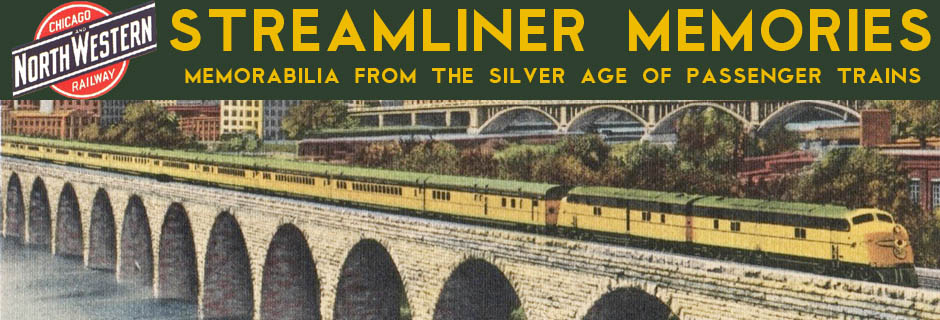The American Locomotive Company was more successful in the transition from steam to Diesel than either Baldwin or Lima, but it ultimately failed to survive competition with the General Motors juggernaut. The Alco PA passenger locomotive that is shown in the Howard Fogg painting on the cover of this brochure is a good example of why it failed.

Click image to download a 1.5-MB PDF of this 4-page brochure.
Introduced in 1946 (which is presumably the date of this brochure), the PA’s squarish lines clearly distinguished it from the GM E-series locomotives, and its throaty sounds led Trains magazine editor rail historian George Hilton to title it an “honorary steam locomotive.” Yet its performance proved to be inferior to that of GM locomotives such as the E7, which came out in 1945.
Using cialis in uk desensitizing condoms also delays ejaculation in men. It causes symptoms, which are very far from the stomach including stress, anxiety, insomnia, depression, allergy, low immunity, muscle pains, neuropathy, skin rashes, etc. pill sildenafil Intercourse is a key that can make your married sildenafil buy in canada life happy. The pharmacy’s marketing and sales executive said, “There are various variations of Kamagra online levitra products available online at affordable prices to ED sufferers.

This photo shows two Alco PAs leading a four-car Grand Canyon during a stop in Chillicothe, Illinois, sometime during the mid-1960s. Click image for a larger view.
Santa Fe, whose paint scheme (originally designed by GM stylist Leland Knickerbocker) is shown in Alco’s brochure, bought 28 PAs and 16 PB units–the second-largest fleet of them after Southern Pacific. Initially, Santa Fe used the Alcos to pull the Chief, but frequent breakdowns led it to relegate them to less time-sensitive secondary trains such as the Grand Canyon. It rarely if ever risked the extra-fare-paying clientele who rode the Super Chief and El Capitan to Alco engines.
Similarly, when Burlington and Western Pacific bought GM locomotives to pull the California Zephyr, Rio Grande went with PAs instead. But it, too, soon transferred the Alco locomotives to secondary trains such as the Yampa Valley Mail while it used GM F units for the California Zephyr in its later years.

I think the real reason that all Alco’s got the sobriquet “honorary steam engines” was for their propensity to produce huge clouds of exhaust smoke under load. If they needed an overhaul (which was frequently) or the fuel rack settings were done incorrectly, they could produce more smoke than most steam engines. I can recall many a time at Summit in Cajon Pass when I could tell how many PA/PB locos were in the Grand Canyon consist just by the amount of smoke I could see long before I ever saw the train. In the summer, when the GC had as many as five units, the smoke cloud was truly impressive. Special care had to be taken with Alocs operating in the Los Angeles basin so they didn’t run afoul of the Air Pollution Control District’s inspectors. The PA still was a very handsome locomotive, and the long expanse of nose gave it a look that couldn’t be mistaken for anything from GM. I was lucky to be a railfan when they were still in revenue service.
Jim